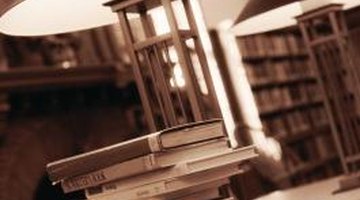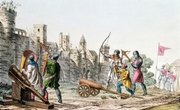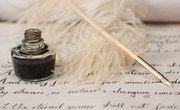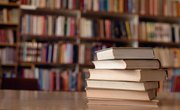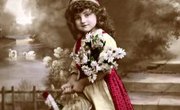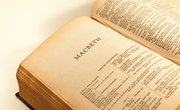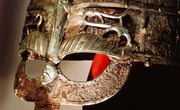"English literature" is a broad term used in many educational settings. It refers to the body of work written or spoken in the English language. It includes prose, poetry, and oral traditions. Although some schools may include American literature in this genre, W. W. Norton and Company, which publishes the definitive literature anthologies used by many colleges, only includes works by British and Irish authors in its English anthology.
Early British Literature
A survey of English literature course or test will most likely begin with the oral traditions of Old and Middle English. The most popular is the epic poem "Beowulf." Although there are numerous written versions of the work, it was originally a spoken poem passed through generations of early inhabitants of England called Anglo-Saxons. The poem is a series of adventure tales about a people called the Geats and an embattled hero named Beowulf. Next, most courses move onto "The Canterbury Tales," which helped English to gain credibility as a literary language in a culture where educated people wrote mainly in Latin. Written by Geoffrey Chaucer, the "Tales" is another series of stories told by different narrators that offers a snapshot of late medieval cultural diversity. Perhaps the most surprising thing about these early British works is their graphic content and crude sexual content.
17th-Century British Literature
William Shakespeare's plays and poems figure prominently in any English literature course. His plays fall under three headings: comedies, where the characters use deceit and disguise to gain true love; tragedies, where a hero succumbs to a tragic flaw in his character causing his own and quite a few other deaths; and histories, where the central character is a former king whose flaws cause his demise. Other prominent authors of this period include John Donne, famous for his "Holy Sonnets," including the line, "Death, be not proud," and John Milton, the blind poet who wrote the allegorical epic "Paradise Lost."
The Romantic Period
This period produced authors who wrote about life, love and nature. Many of these authors found the world to be disappointing and had a melancholy bent to their works. John Keats is possibly the most famous author of this period. Students often study his many odes, especially one contemplating the unchanging nature and eternal youthfulness of characters painted on a Grecian urn. William Wordsworth is also a key figure, with the notable poem "The world is too much with us, late and soon," as is his collaborator Samuel Taylor Coleridge, who wrote "The Rime of the Ancient Mariner."
Victorian and Modernist British Literature
The Victorian period, which lasted from the mid-1800s to the beginning of the twentieth century, includes the love poems of Elizabeth and Robert Browning, Lord Alfred Tennyson's sweeping saga of Camelot entitled "Idylls of the King," and the Scottish writer Robert Louis Stevenson's adventure stories and novels, including his famous "The Strange Case of Dr. Jekyll and Mr. Hyde." Modernist English literature includes the works of William Butler Yeats, Virginia Woolfe, James Joyce and D. H. Lawrence, who all dealt with sometimes disturbing themes of death and disillusionment and pioneered new literary forms.
Literary Terms and Devices
Included in any study of literature is the study of literary elements. Students should be familiar with the definitions and uses of "theme," "mood," "style," and "symbolism" in regard to written works. Knowing poetic devices and forms such as "meter," "rhyme," "alliteration," "sonnet," and "quatrain" is also essential.
Related Articles
References
Resources
Writer Bio
Diane Kampf has more than 20 years of teaching experience ranging from middle school to college freshmen. She holds a Master of Arts degree in creative writing and English literature and a New York State Secondary Teacher Certificate. She has written educational materials for Learning Express, LLC, Kaplan and Pearson.

